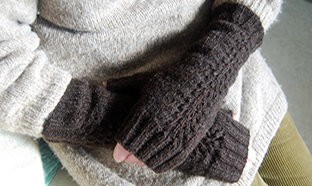Designer mittens: Mine for the giving
She was sitting on the cement sidewalk along Michigan Avenue on a February day. She must have been numb with cold. I could imagine that cold settling in as she sat, and I shuddered. “Here,” I said, bending down to greet her with a gift card. “This is worth $3 at Dunkin Donuts. Get something hot.” She didn’t say thank you. Instead, she looked up at my cherished fur-lined leather mittens and said, “Those mittens look warm.”
I said, “Yes, they are” and resisted a sudden urge to thrust them deep into my pockets. The encounter troubled me all morning. I’d left her with a voucher for a bowl of soup that would last a few minutes, but her thin knit gloves would let the cold in all day and all night. By lunchtime, I’d made up my mind to do something. I’d walk by the same corner, and if the woman was still there, I’d go get her a pair of mittens.
When I saw her still begging at the corner, I walked to a drugstore. But nothing on the shelves was any warmer than what she was wearing. OK, I thought, determined not to give up once I’d begun, I’ll try another store. But that store had nothing useful either—the cold snap had cleared out the glove and mitten section. One more store, I thought, and I’ll have to give up. Again, there wasn’t much to choose from. Then at the bottom of the display, I discovered a pair of snazzy, double-thick knit mittens with bold white and black diagonal stripes and a knitted cuff that went halfway to the elbow.





